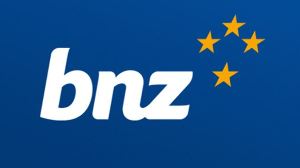
Jarrod Kerr, Kiwibank
Kiwibank says there is no doubt the economy needs support and there is no doubt the RBNZ should be aiming to stimulate. But does it see it that way? It should, Jarrod Kerr, Kiwibank chief economist says.
Recent data has strengthened the case for a more “go for growth” focused RBNZ. “The RBNZ will have removed the restrictiveness of monetary policy, but that is not enough,” he says.
Adding to the data that have solidified the need for more policy action has been the central bank’s own improved Tara-ā-Whare - Household Expectations Survey showing the 1,000 households surveyed think median inflation now running at 2.7% will be at 4% in a year’s time and 3% in two years’ time.
Households are known to believe inflation is always higher than it actually is. In this latest expectations quarterly survey started on the same day as Stats NZ’s CPI release on 21 July, the mean household expectation for one-year-ahead annual inflation increased from 5.6% to 6%.
The survey also revealed the mean two-year-ahead inflation expectation dropped slightly from 4.7% to 4.6% this quarter, while the mean five year ahead expectation increased from 3.7% to 4.1%.
For house price inflation, households estimate one-year-ahead it will decline from 2.2% to 1.8%.
On average, households expect a 17.9% chance of not making a rent payment in the next three months, a drop from 19.5% last quarter. Households also reported a 15.1% chance of not making a mortgage payment in the next three months, compared to 12.3% in the previous quarter.
Respondents believe they have a 41.2% chance of finding a new job in the next three months if they lose their existing employment, up from 39.1% in the previous quarter. This is the first increase following five consecutive quarterly declines.
Kerr says the weakness in the economy demands stimulus. “With all the risks offshore, and the pain still felt onshore, there’s a good argument to be made for taking policy into stimulatory territory asap. An argument that is growing in support.”
He says if it was up to Kiwibank’s economists they would not have taken the pause in cutting the OCR the RBNZ did last month and would now be aiming the cash rate at 2.5%.
“We are nearing the end of the cycle, but not yet”
“Headline inflation may have lifted to 2.7%, and may move higher still, but that’s not the focus, inflation over the medium term is.
“Core measures of inflation are improving and there’s still significant spare capacity in the Kiwi economy.”
Kerr says this week’s decision by the RBNZ should look to set a policy path that is right for recovery. “We need a stimulatory monetary policy setting.”
So, what do that mean? Estimates of a “neutral” setting – when policy is not hurting but certainly not helping – range from 2.5-3.5%, with 3% being roughly right.
Kerr says a cash rate of 3% isn’t stimulatory, and it isn’t encouraging excessive behaviour or inflation. “But we need a stimulatory rate if we’re going to encourage businesses to take on risk – either invest or hire.
“And we need a stimulatory rate if we’re going to see embattled households boost discretionary spend. Around 2.5% is closer to what we need. And the risks are towards a 2% cash rate, in our opinion.”


